Address
2201 Laguna Street
Santa Bárbara, CA 93105
United States
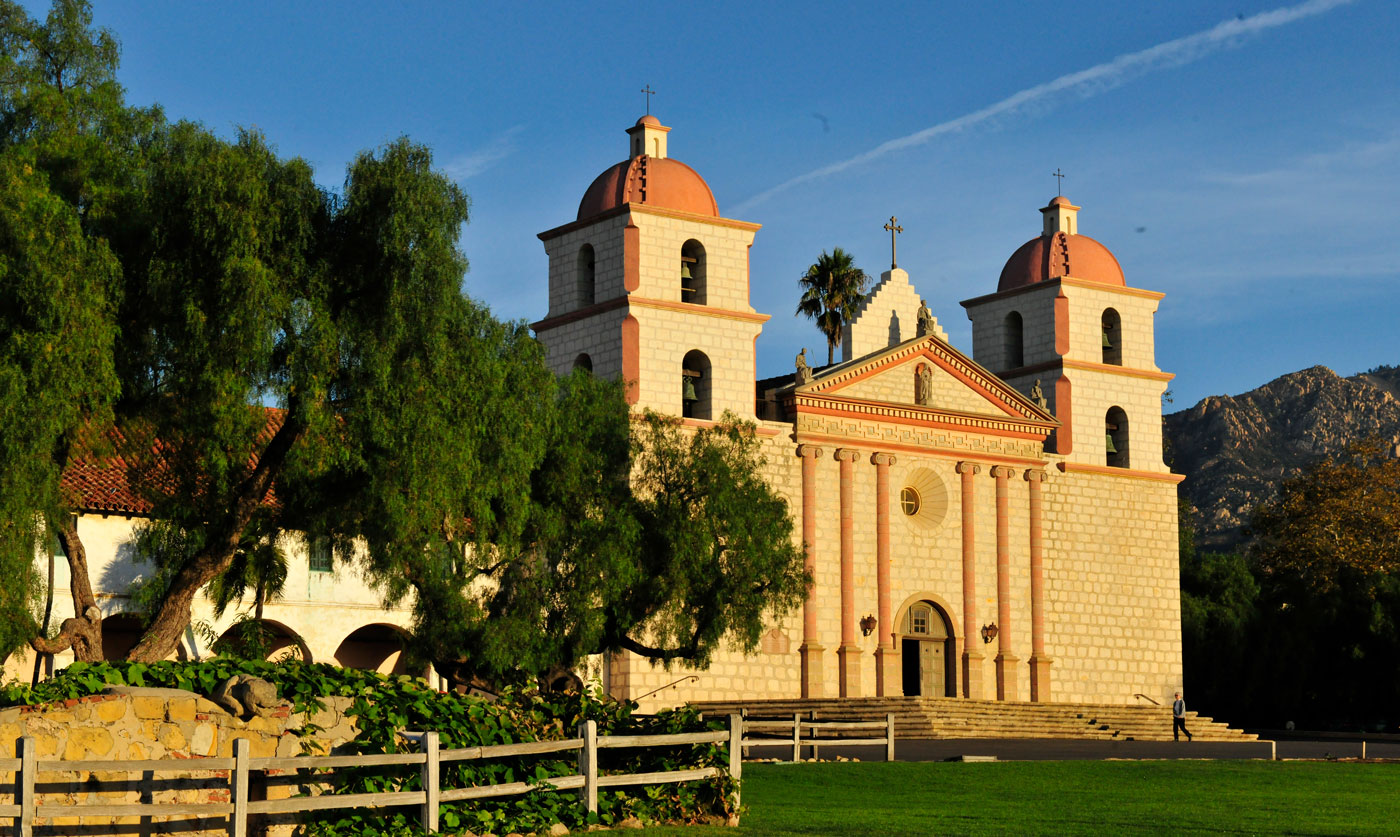
Founded:
December 4, 1786 - The 10th California Mission
Current Status:
Active Roman Catholic Church owned and operated by the Franciscans of the Santa Bárbara Province.
Summary:
Santa Bárbara, founded on December 4, 1786, is the only mission continuously operated by the Franciscans since its founding. This major mission has a distinctive church with a Neoclassical façade, a beautiful Moorish fountain, well-tended gardens, and a large museum. The only restored California Presidio is located in downtown Santa Bárbara.
2201 Laguna Street
Santa Bárbara, CA 93105
United States
Take US 101 to Santa Bárbara, exiting at Mission Street. Follow Mission Street for 0.9 miles and turn left on Laguna.
805-682-4149 - Mission Gift Shop
805-682-4713 - Parish Office
Please contact the mission directly by telephone or by visiting the mission website for the most current tour information. Here are several suggestions to get you started:
Due to Covid-19 restrictions, it is best to check for current information.
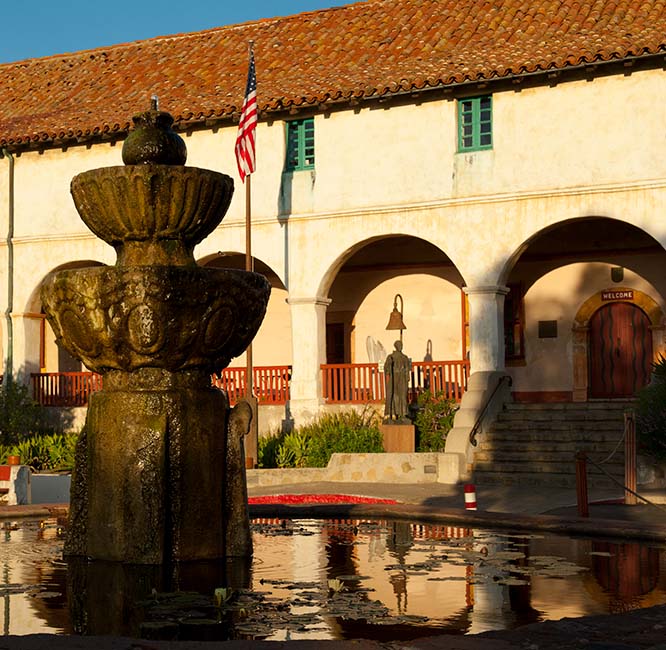
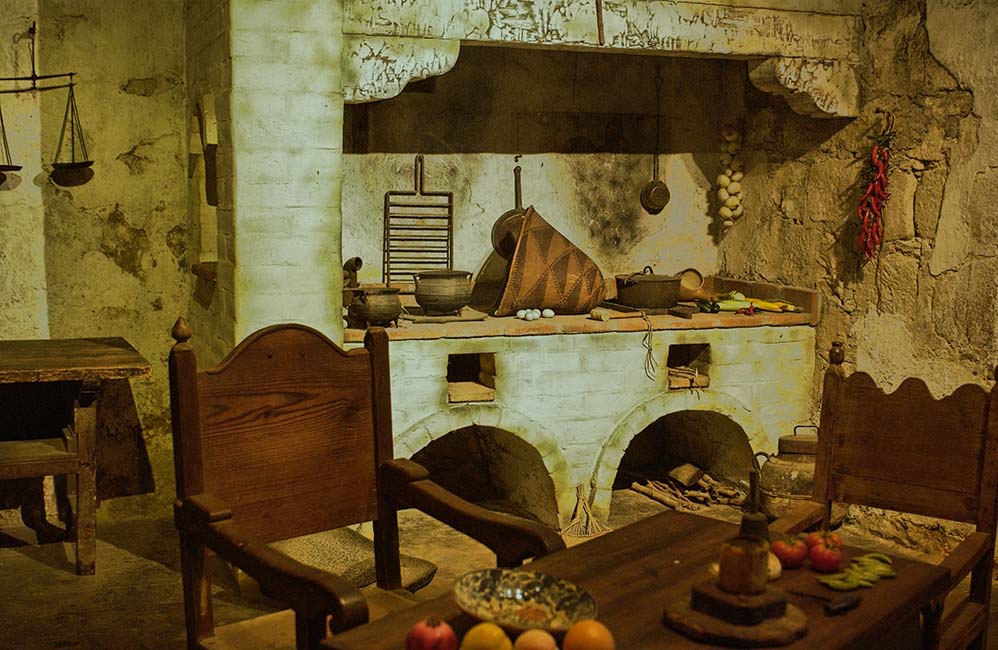
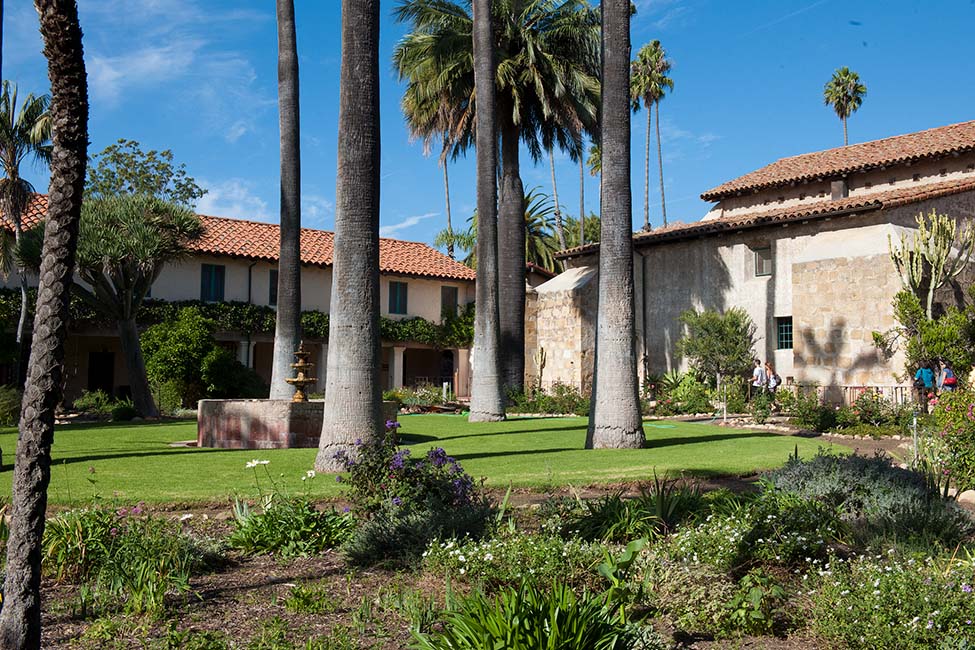
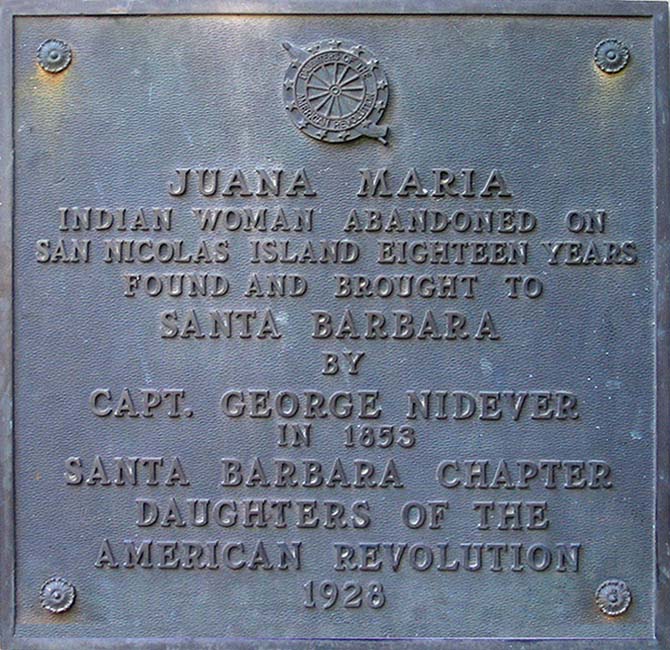
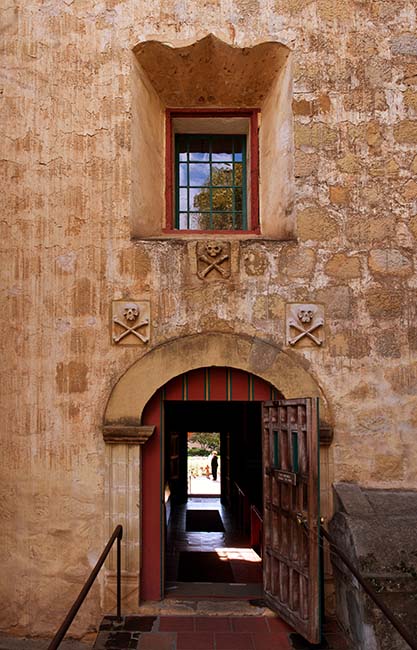
Santa Bárbara is a popular site for weddings. There is a minimum of six (6) months lead time required. Contact the Parish office for details to determine date availability by telephone at 805-682-4713 or by visiting the mission website.
This mission is the site of several special monthly and annual events. For the most current information and schedule, visit the mission website .
There are many attractions in front of the mission to view when you arrive or before you leave:
Visit the church, either as part of the regular tour, or if you have time, after church services.
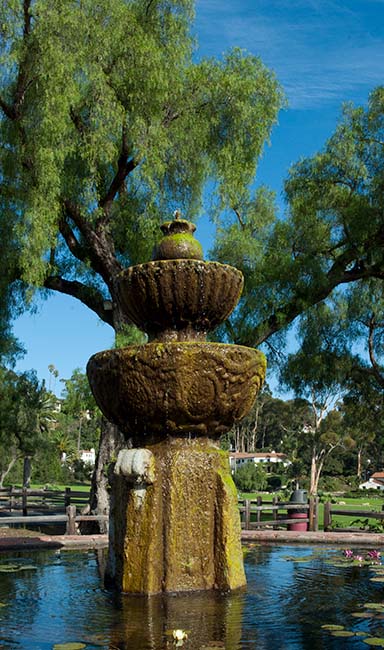
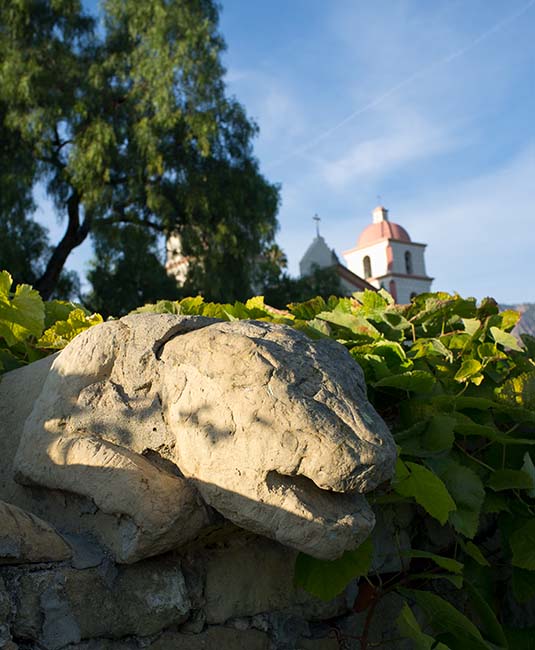
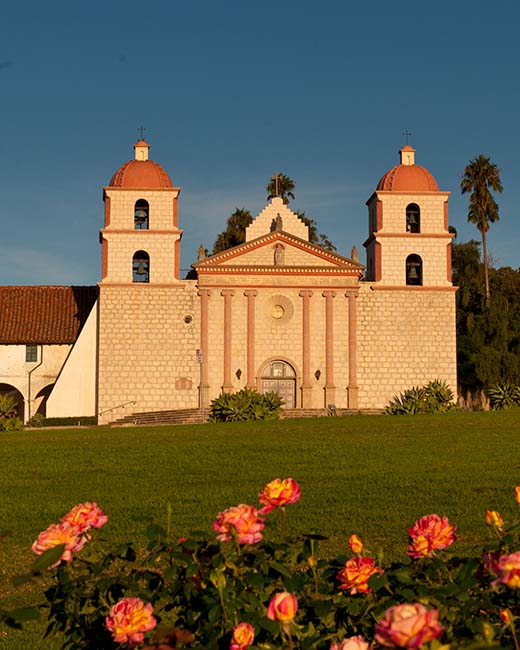
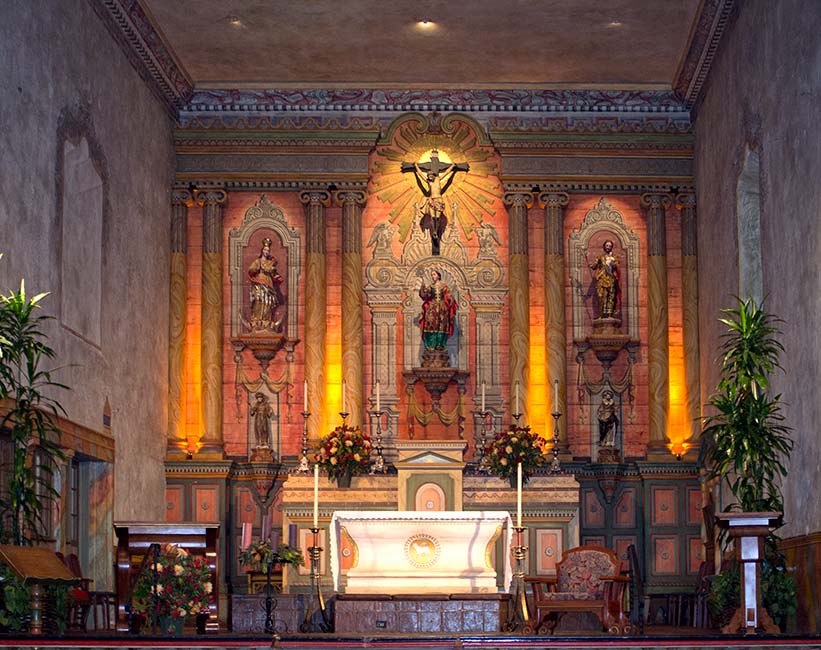
1834
1865
Saint Bárbara, a legendary martyred church figure of the third (3rd) century.
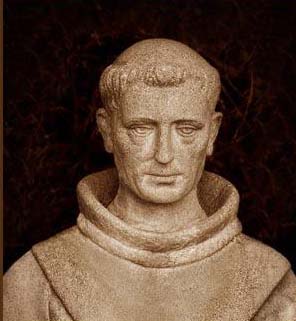
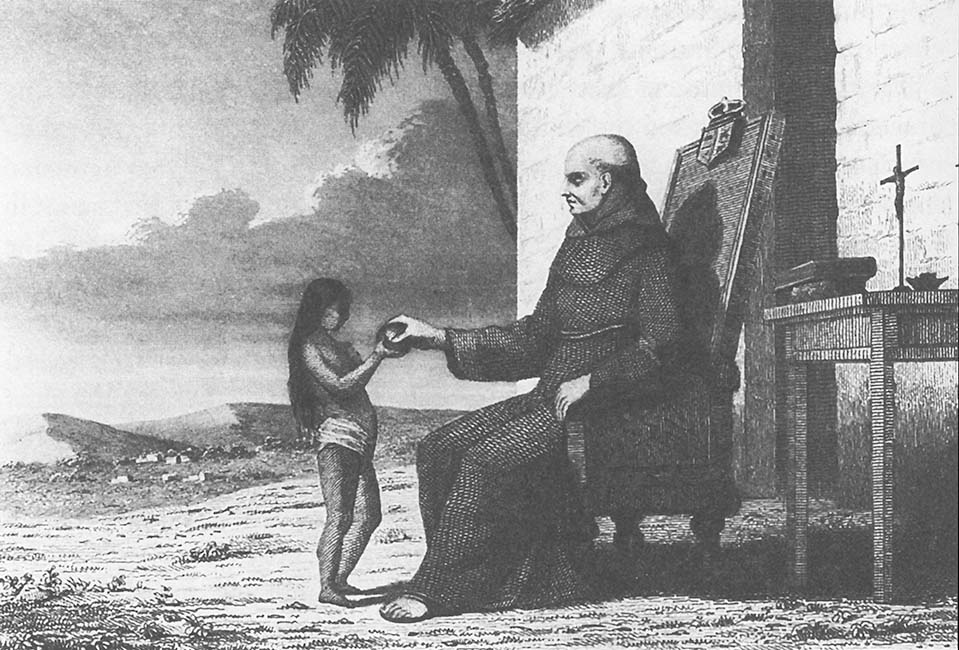
Santa Bárbara was the third mission established in the land of the Chumash people at the native site of Xana'yan. The neophytes were referred to as Barbareño (after the mission) and Canaleños.
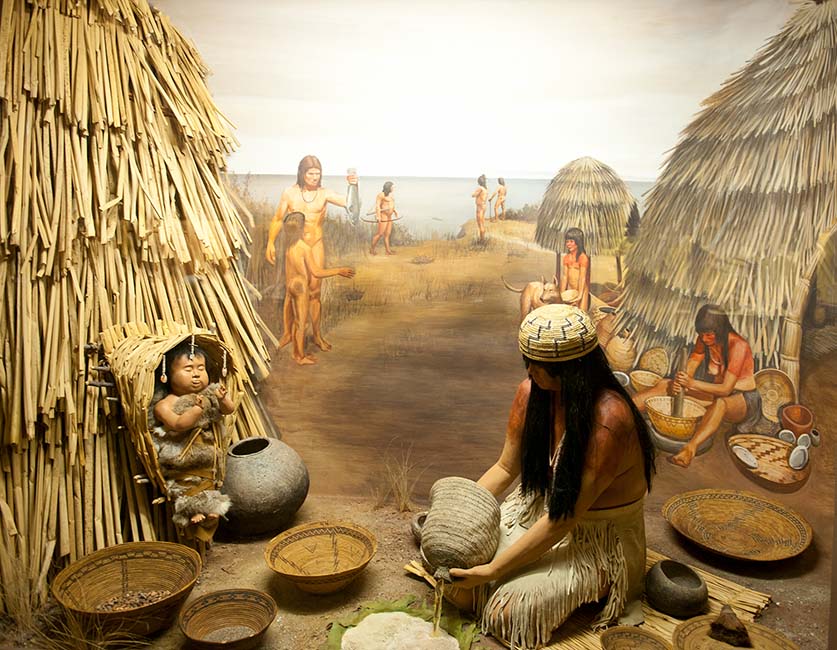
In the city of Santa Bárbara on a hill commanding a striking view of the sea.
Santa Bárbara was laid out in the traditional quadrangle, with separate granaries, a weavery with patio, tannery, and neophyte housing forming additional courtyard-oriented squares.
Many of the existing buildings at the rear of the mission complex, however, were created to meet the needs of the seminary established in the 20th century. Most of the new construction follows the foundations of the old quadrangle.
Water was channeled from a dam constructed in Pedregoso Creek high above the mission. A two-mile long stone aqueduct carried water to a storage reservoir, feeder reservoir, and settling tank constructed in 1806 and attributed to Indian mason Miguel Blanco of Baja California. A second aqueduct carried drinking water to the mission, its fountains, and lavandería or washing facilities.
The highest population recorded was 1,792 in 1803.
Santa Bárbara had a sizable livestock herd that exceeded 10,000 head in the years 1802-1823. In the peak year of 1821, the mission had 13,732 animals including 3,500 cattle and 9,000 sheep.
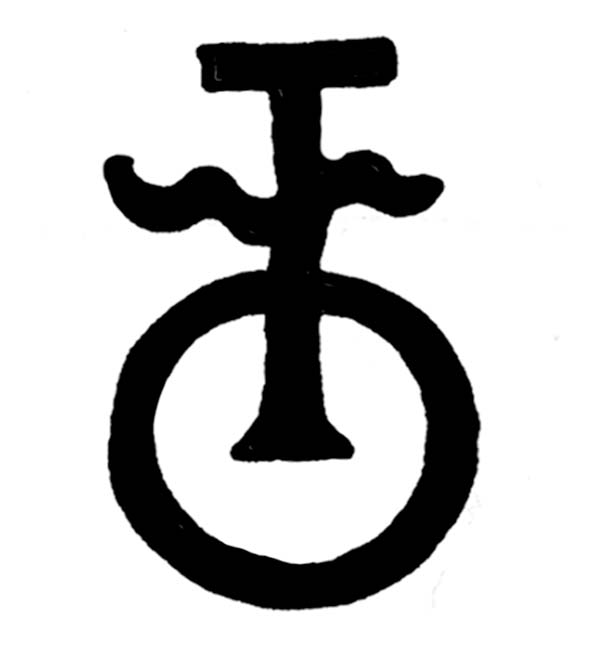
Over the years 1787-1834 Santa Bárbara reported harvesting 223,285 bushels of wheat, barley, corn, beans, peas, lentils, garbanzos (chickpeas), and habas (broad beans). The mission had two (2) vineyards and many fruit trees.
The church was completed in 1820 with one tower. The second tower was added in 1831, collapsed within two years, and was rebuilt in 1833.
The Neoclassic façade was inspired by a mission archives copy of the Spanish edition of The Six Books of Architecture by Marcus Vitruvius Pollio, a Roman architect of first (1st) century B.C.
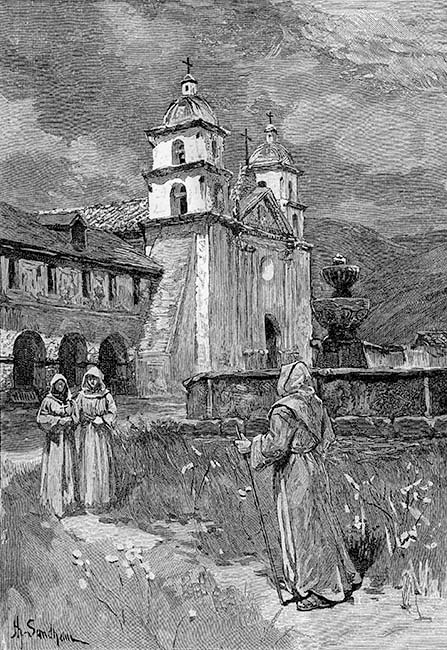
Six bells hang within the two church towers.
The mission church is filled with original and noteworthy paintings and statues.
The two largest religious paintings in all of the missions are found in Santa Bárbara.
Neophytes revolted at Santa Inés, Santa Bárbara, and La Purisima in 1824. The event underscored how relations with the largely Chumash neophytes deteriorated after the Mexican takeover of California in 1821.
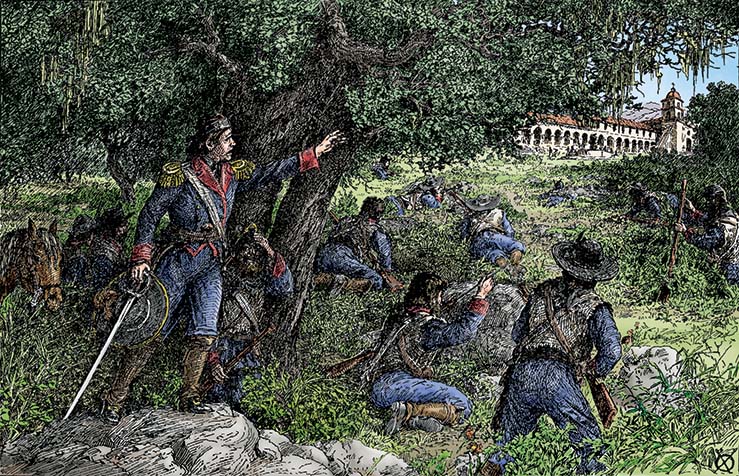
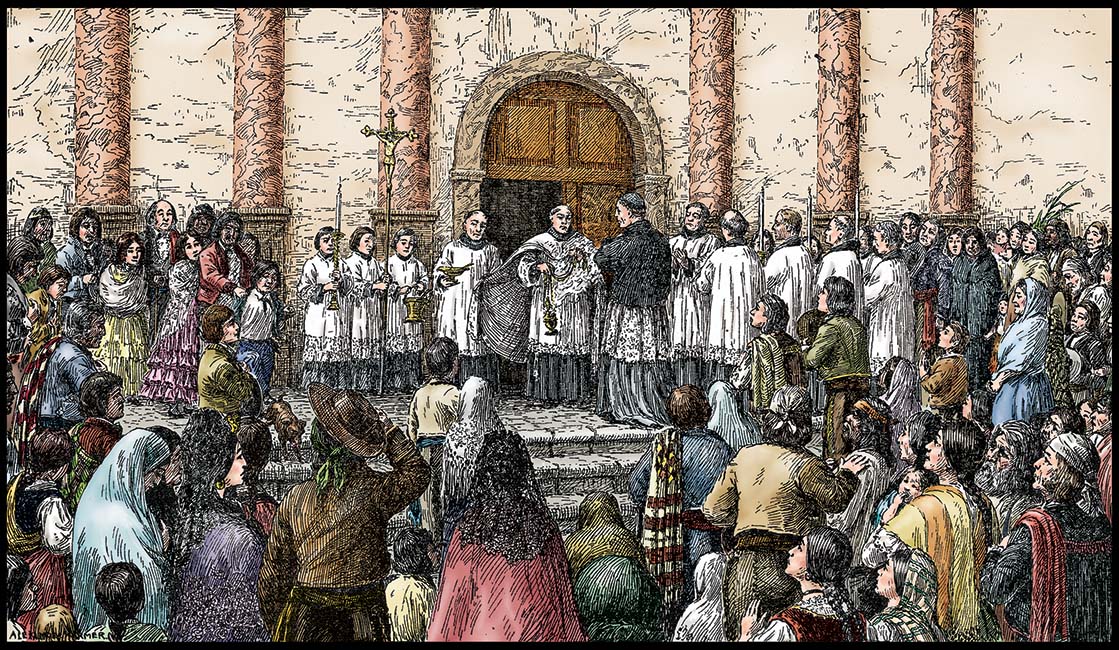

Santa Bárbara is the only mission continuously operated by the Franciscans since its founding in 1786. The elegant church, which has a Neoclassical façade, has been extensively illustrated over the years, and this Historical Image Gallery contains many illustrations done in the 19th century.
The Contemporary Image Gallery contains more recent photographs taken by several different photographers from around the Church gardens and the Church interior.














